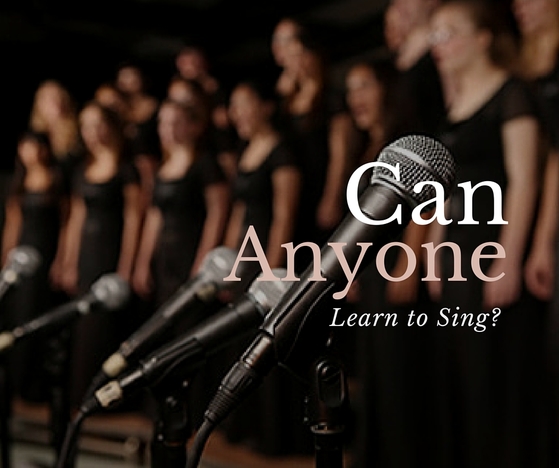STUDIO RECORDING ESSENTIALS23/1/2016 At MCCHOIR we’re pretty pumped about getting into the studio to record two original songs which I co-wrote with Jared Haschek of SHOUT! Publishing specifically for the choir. This weekend we are laying down the instrument beds for both songs which includes, drums, keys, bass, guitar and horn section. So I thought this might be a great chance to blog about our experience in the studio. This blog is a bit of an introduction and I will follow it up once we have finished the recording with some of the major things we have learnt. It’s been great working with Jared who has written all of the music and also helped out lyrically and he will be producing the albums at The Bass Recording Studios Melbourne. Studio work is very different from live work. There are lots of things that you can let slide in a live performance which will be glaringly obvious in the studio – like intonation problems and making mistakes no matter how minor. To make the most of a studio session takes a lot of discipline and you must be aware of what your singers can and can’t do. Remember that your recording will be heard over and over many times. There are lots of ways to record a choir but at MCCHOIR we wanted to give our members the chance to experience working in a recording studio and to learn all the ins and outs of music production. So let’s start with the basics by familiarizing ourselves with what to expect at the studio. At the studio there will be a sound booth and a control room. The control room has all the equipment used to record and where the sound engineer works. The booth is where the vocals and instruments are recorded. The studio we are using has several rooms, a smaller room for recording individual instruments and a larger room with a grand piano and can fit a larger group. Some groups will record the instruments and vocals at the same time but this can be very trick to get every part right but gives you more of a live feel. We have decided to do our recording in two phases – music beds first and produce a rough mix that we can use to rehearse with the choir. Then when we are ready we’ll go into the studio well prepared knowing exactly how the track will sound with all the instruments. So the equipment in the vocal booth you need to be familiar with include a headphone amp, a pop screen filter, studio microphone and acoustic treatment. Your headphones will plug into the headphone amp and allows the singer to control how much track and vocal they want to hear. This works well with smaller groups as each individual can adjust their mix to suit their ears. With a larger group you may need to have representatives from each section with headphones to guide the other singers or use an open amp. This latter option will allow some of the track to spill over into the vocal recording which is not ideal but with a large group may not be avoided. The pop screen filter is placed in front of the microphone to reduce popping and sibilant sounds and allows the singer to focus on emotion and tone. It also allow the engineer to record and edit your voices more readily. It’s more used in solo work as you would be singing much closer to the mic than in group work. There are lots of different studio microphones that can be used for different purposes depending on the style of song. Most commonly a valve microphone is used as it captures very rich and warm tones. Because they have a large diaphragm this allows a wide range of frequencies to be recorded. The room will also have some form of acoustic treatment which includes the materials used, the shape and size of the room which all impact on the overall sound. In a room with parallel walls the sound is reflected off these surfaces to create a natural ‘reverb’ which can interfere with the recording – especially of voices. Studio’s will use diffusers to absorb some of the sound. With studio work – the closer you are to the microphone the warmer your voice will sound. This would be ideal for a ballad with subtle instrumental backing and singing close to the mic will give your voice a rich warm tone. With headphones I prefer to have on can on, one off so that you can hear the track as well as hear yourself in the room. Most people find this helpful to pitch correctly but others may prefer both ears covered. It’s also important that you can hear yourself clearly in the mix so that you’re not straining your voice. It’s important to have a tonal instrument in the mix so that you can pitch correctly. This might be a piano whereas other instruments may be distracting and should be turned down in your mix. I find fewer instruments is better than the full mix so that you can vocalize well. Because our choir has fewer men than women we are planning to double up the male recording. So you may in this case wish to have the first take in one ear and the second take in the other ear. In this way it will be easier for both takes to fit seamlessly together and keep the timing tight. For group vocals it is really important that you can hear how others in the group are singing. Think about the vocal blend, is it a soft or hard tone. You need to think about how you can blend with others to get a uniform and quality sound. Think about the placements of breaths and take note of starting and finishing notes together. Think about the phrasing in other words and also decide how strong your diction will be. One key to blending is a uniform formation of vowels so that everyone is singing the same sound. The great thing about our first recording with MCCHOIR is the music we are recording is original - which means we can have a lot more control over how we sing and put more of our own personality and style into it. One approach to recording is to sing through the whole song once to get your headphone levels right and allow the engineer to capture the right tone and compression etc. Then record the song several times and latter you can piece together the sections that work best. Then if there is anything that needs another take you can go back into the booth to do another take. Whatever way you do it remember to keep a lot of emotion in your singing as studio recording can become quite mundane if your singing the same line over and over. Also think about how much ‘reverb’ you want on your voice – reverb adds a bit of an echo and makes the voice sound less dry and can help you sing better. The amount of reverb will depend on the style of song also. Having said that reverb can put some singers off and make you sing sharp or flat – singing dry (with no reverb in your headphone) gives the best feel for what is being recorded. Effects can be added latter. One important note to remember is to always warm up properly before a recording session as this will change the tone of your voice and give you a more consistent vocal between takes. It’s also important not to wear clothes that are noisy of lots of jewelry that will interfere with the recording. Most importantly you should enjoy the experience – we all sing because we love it and want to give our best performance so keep relaxed and do your best. I'd love to hear from other groups who have done some studio recording - share your experiences in the comments. Jason Simmonds Creative Director Melbourne Contemporary Choir The Bass Recording Studios Melbourne
0 Comments
TOP 10 TIPS FOR GROUP SINGING14/1/2016 Singing in a group or ensemble like a choir is probably the best way to train your ear to sing harmonies and to blend with other voices as well as learning to work with people.
I personally think that group singing and choir work are much harder than soloing – because it requires tremendous team-effort. So how can you best prepare yourself to be part of a choral group or ensemble? 1. Warm-up Beforehand The primary purpose of the rehearsal is to learn new repertoire, not for vocal maintenance. You can save a lot of time and unnecessary vocal strain by coming to rehearsal already warmed-up. By completing some simple stretches and vocal scales you can significantly alter the timbre and tone of your voice which is so important when you are trying to blend with 50 other voices. 2. Be Punctual This ones pretty self explanatory – but when your working with a group of people it takes co-operation and respect to achieve something great. Being on time is really just common courtesy to your leader and the other members of the group. There’s nothing worse than having to cover old ground for stragglers who miss the start of rehearsal. 3. Keep Hydrated A bottle of water is a singers best friend – you need to keep your vocal cords well hydrated, this will help you sing for longer and reduce vocal fatigue. Especially during long rehearsals you should be sipping water throughout. It’s worth noting that to be fully hydrated you need to have taken some water 24 hours before rehearsal so don’t just bring water with you. To keep yourself vocally fit you should drink plenty of water everyday. 4. Record the Sessions With smart phones these days it’s so easy to record rehearsals and review the session at a latter time. In my choirs I record the rehearsal and play it back in the car when I’m driving. That way I can remember all the annotations and tweaks for the repertoire we are learning. You’ll look super prepared for your next session in you review each rehearsal in your own time. It’s a great way to learn parts and lyrics as well. 5. Annotate your Score Whether you use lyric sheets or musical scores it’s a great idea to have a lead pencil to mark music to remind you of the directors instructions and have little cues in the music about tone, dynamics, syncopation and diction. It’s not surprising how much we forget once we’ve finished a rehearsal. Have a notebook handy to write down important notes about each piece if you can’t write directly on your copy. 6. Blend, Blend, Blend The key to blending effectively is listening and be willing to adapt your voice accordingly. For example if everyone is using a lot of breath in one section and singing softly – don’t belt out the tune to be heard. When singing harmonies I like to think of a pyramid with soprano’s at the top followed by altos, tenors and basses at the bottom. Often the sopranos will need to pull back a bit, by nature of their vocal presence, in order to get a good blend of parts. The overall volume should be dictated by the quietest section. One choirs forte may sound very different to another. 7. Singing Harmonies It's often a good idea to learn the melody first, once your confident with the tune you can break off into harmonies much more easily. If your working from lyric sheets you can draw lines which indicate which notes are higher or lower. Some will find that harmonies come quite naturally for others a little more work is required. If you fall into the latter group you may want to put in some work before hand to learn your parts so as not to put everyone else off. One of the best way to harmonise is with simple rounds. Try singing 'Row Row Row Your Boat' with the group and each section come in one or two beats after the preceding part. With this one you can break it into about 12 parts or so, with everyone singing the same tune but in a delayed fashion. 8. Listen to Music A great tip is to listen for other parts in music other than the lead vocal or primary instrument – always be listening for what else you can hear. Are there backing vocals, can you hear a counter melody. It takes a bit of concentration to listen for things that you would not normally take in with casual listening. With a bit of active listening you will learn about song structure and arrangement in no time. 9. Chord Structure Having a little theoretical knowledge about chord structure will go a long way to improving your skills in musicianship. Piano or theory lessons will accelerate your skill for harmonies and you will become a more confident vocalist. 10. Don’t be a Distraction In a group setting its important to listen more than you speak, with everyone talking – especially in a room with a lot of reverb – its very difficult to be productive. With too much chatter, you will miss instructions and the whole experience becomes frustrating. A professional attitude goes a long way and you’ll find that your group moves ahead in leaps and bounds. Jason Simmonds Creative Director Melbourne Contemporary Choir A NEW BREED OF CHOIR11/1/2016 Music is such a vital part of Youth Culture and one that we need to encourage. Young people idolise pop figures and bands but most don't have the opportunity to perform in a group. As a youngster I was lucky enough to be introduced to a youth choir through the Salvation Army under the leadership of Anita O'Brien. There are not many names of teachers from my formative years that I can remember the name of, but the experience of singing together with my peers is a memory I cherish to this day. My love of music was born out of my early years in "The Hawthorn Singing Company" - in fact one of the current members of Melbourne Contemporary Choir sang with me in this group - the influence this experience had on me musically is profound. This is the reason I'm starting Melbourne Contemporary Youth Choir (MCYC) - because so many young people in the North of Melbourne don't have the opportunity to learn the craft of singing. Some of my fondest memories were weekends away with this young group of singers learning a new musical or performing at the Myer Music Bowl or just making music together. I want to give young people today that same buzz. This group is 'A New Breed of Choir' - the sound will be cutting edge, performance opportunities will be electric all the while with a huge amount of outrageous fun. From electronic, dance and pop and a little bit of RnB thrown in, there will be something to appeal to every young person. We want to start in Term 2 this year so we're looking for young people Ages 13 - 18 who want to be part of something bigger than themselves. I hope to offer touring opportunities and studio recording sessions together with loads of opportunities to perform. Being part of a group that works together to create musical experiences that capture audiences is so healthy. The choir will rehearse Thursday evenings from 6 - 7 PM in Macleod. MCYC is going places and we want you to be part of it! Register your interest here: Jason Simmonds
Creative Director Melbourne Contemporary Choir Melbourne Contemporary Youth Choir OVERCOMING STAGE FRIGHT11/1/2016 The No.1 fear that most people have is speaking in public –it’s not second nature to get up in front of a crowd and perform. This blog will give you some strategies and tips to overcome it.
Often when you are presenting something of importance either to you or your listeners, performance anxiety (‘Stage fright’) may kick in. Really the essence of stage fright is thinking about all the things that could go wrong when you get on stage. Tell tale signs of stage fright. Signs of stage fright might include trembling, dry throat, sudden tiredness, nausea, difficulty concentrating, shortness of breath, lack of vocal control, exaggerated fear, anxiety attacks, lack of co-ordination, a feeling of faintness, emotional flatness and an inability to see or hear correctly. Most performers have experienced one or more of these symptoms at one time or other. You may have heard that it’s good to be nervous because it keeps you on your toes – however having freat stage presence and coping with nervousness is quite tricky for people who have severe stage fright. Coping with stage fright So often performance anxiety is the result of a negative mindset, so it’s here that well start to address the issue. In this way you can try and do something about the nervous reaction in your body. 1. What is the root cause of the fear? Have a think about what’s causing you to be so afraid – this will give you the best chance at overcoming it.
2. Use Your Imagination By visualizing your performance, and imagine you are super confident. Take a stocktake of yourself – you’re well dressed, calm, singing well and the audience is lapping it up. Most importantly you are enjoying yourself. 3. Positive self-talk This is a great way to eliminate deep seated negative mind sets. Look in the mirror and give yourself some positive affirmation. A good self-image is healthy, tell yourself ‘you can do this, you are going to do a great job tonight, you are confident and more than able to do this.’ 4. Be yourself Authenticity is a rarity these days, and your audience will love it when you are honest and they feel like their getting a real person. There’s no pressure to be something you are not. 5. Flip the fear on its head Instead of thinking of what your audience might think or respond – focus on what you can give them to take home. Take the focus off yourself and give people something memorable that they will treasure. Here’s some quick fire sure tips for your next performance:
Don’t forget you can do it – trust yourself! Jason Simmonds Creative Director Melbourne Contemporary Choir Pro Singers Vocal Warm-Up Secrets7/1/2016 As a special treat for my readers I’m going to give you three tried and true exercises for warming up your voice, getting rid of phlegm and bringing clarity to your vocal tone. I’m a little hesitant to share these because they really work and it seems all too easy to be true. These are best done first thing in the morning before a performance to get your voice in tip top condition. I got these exercises from a seasoned session singer who uses these everyday to bring about a really bright tone and removing any raspiness from his voice – they work wonders! The shower is the best place to start your warm up – breath in some warm steam and try these simple exercises: 1. ‘m’ on a three tone scale With all of these exercises you want to imagine a cello or other stringed instrument and sliding your finger up the strings as the notes ascend and descend so that you don’t sing distinct notes but rather you slur or slide the notes into one continuous scale. The three main notes are a simple triad for example C, E, G, E, C. pausing on each note of the triad. Men might want to start a bit lower than a middle C. You should feel a buzzing sensation around the lips on the ‘m’ sound. With all of these exercises you don’t need to go very high – you’ll find the vocal clarity will extend to your upper register automatically without going too hard too soon. Be gentle and allow your voice to move up by semitones for each new triad very slowly. You can work your way back down once you’ve reached the top of your comfortable range. 2. ‘n’ on three tone scale Again with the same triad scale as you used in exercise one, repeat on an ‘n’ sound. The tongue should be sitting just behind the upper front teeth Keep it slow and gentle. Don’t try and extend your range with these, keeping the notes as low as possible seems to really clear any phlegm on the vocal cords. This will eliminate any morning huskiness and get your voice ready for more stretches latter on, once you’re fully warmed up. 3. ‘ng’ on a three tone scale Finally you want to use the same triad as in exercise 1, but use the sound ‘ng’ as in the word ‘song’. The back of the tongue should be touching the soft pallet in the roof of your mouth and the jaw is dropped. You may like to gently hold the chin with your pointer finger to keep the mouth open as much as is comfortable. This exercise is very therapeutic and can be used for a very effective cool down, as is gently restores the vocal cords without undue strain. As with the first two exercises keep the scales low within your comfortable range. It’s as easy as that! You’ll find that the earlier you start with these in the morning and the longer you do them, the clearer you voice will become. It’s so important just like an athlete gently warms up before exercise, to prepare your voice before a gig or performance. These three little exercises are a fantastic little arsenal to add to your morning warmup and you’ll hear the difference from the very first note you sing.
Jason Simmonds Creative Director Melbourne Contemporary Choir CAN ANYONE LEARN TO SING?7/1/2016 Chances are if you are someone who loves to sing, but struggles getting through a song without going off key or having your voice break up and sound weak you have probably heard someone say that "you are either born with the ability to sing or not." This old saying not only leaves people feeling hopeless and discouraged, it couldn't be further from the truth! The truth is, SOME people have a unique genetic make-up that can give them an advantage, but the real reason people naturally sing well is because they knowingly or unknowingly use proper singing technique. The good news is there is hope for anyone who wants to improve their singing ability since we all have a similar vocal anatomy. Most people just need the right training to find the true potential in their voice. Why not try joining a great choir where you can get all the benefits of quality vocal coaching as well as exercising your voice regularly. At Melbourne Contemporary Choir you’ll learn to increase your vocal range, improve your tone, pitch and style, gaining the ability to sing with ease and control. So start your vocal journey today register your interest with MCCHOIR and receive - 20% off your annual membershipwhen you pay for your full years membership by 28th January.
Jason Simmonds Creative Director Melbourne Contemporary Choir WHY JOIN A CHOIR IN 2016?5/1/2016 Happy New Year! Those words usually conjure up resolutions to loose weight, join a gym and eat more healthy food. But I’ve got an idea that you might like to think about as the perfect New Years Resolution. Perhaps you used to sing in a school choir or singing group in years gone by but the business of life hasn’t allowed you to pursue your musical ambitions. Well the great news is that it’s never to late to pick up singing again, with a little practice you can regain your singing mojo and have a lot of fun in the meantime. But why do it alone? Sure singing lessons are great for perfecting your vocal technique as you have one –on-one attention and I recommend it to anyone who is serious about singing. But joining a community choir can give you the benefits of singing and everything that goes along with that for a fraction of the cost of private tuition. I’m going to give you 3 reasons why you should join a choir like Melbourne Contemporary Choir in 2016 – if you do so it just could be the best decision you’ve made in a long while. 1. Being in a choir definitely has a social benefit: Choir singing builds new friendships and brings together people from a community in a way that very few other activities can. Singing in a choir will boost your self-confidence, self-esteem and give you the ability to work in a group as part of a team. Singing in a choir will also boost your mood through the release of ‘feel good’ hormones. 2. You’ll gain skills in singing: Effective teaching in a choir setting has demonstrated that most people CAN be taught to sing. The Phillips breathless choir is a perfect example of this – people with lung failure and breathing problems have been taught how to sing within the group by Gareth Malone. Choir singing is very inclusive and has the potential to improve individuals quality of life enormously 3. Choirs promote cross-cultural understanding: Because the voice is so portable a choir can transect the globe very easily. There are plenty of examples of choirs touring and sharing songs from their own tradition and in their native language. Music has the innate ability to cross language and geographical barriers like no other medium. Our choir is recording and performing original works written specifically for the choir – it’s so much fun seeing a piece of music come together on a night with all of the complementing harmonies contributing their part. There’s nothing quite like the experience of group singing and I’d encourage you to take the first step and join a great choir and start your vocal journey – I guarantee you won’t regret it.
Jason Simmonds Creative Director Melbourne Contemporary Choir 3 tips to singing without strain2/1/2016 In the last blog we covered singing without strain and gave you some basics about your vocal anatomy and how healthy it is to sing with retracted False Vocal Chords (FVC’s). This will help you sing with ease and put less strain on your vocal cords and allow you to produce a beautiful, clear and clean tone. So that’s all great – but its really tricky to retract your false vocal chords and the reason is because the nerves which connect your brain with the muscles that control the FVF’s have to travel a long way and even have to bend down and around an ‘S bend’ to reach the muscles that control FVF’s retraction. So the ‘message’ or ‘feeling’ of these muscles moving is a little hazy at first, but with practice you can get the sensation of retracted vocal folds and just by thinking about them, you’ll be able to control them and move to a healthier singing voice which produces better tone that you ever imagined possible. I love sharing these three tips to retracting your FVFs with my choir because they make a huge difference in your singing quality instantaneously - even for the untrained voice. Try one or all of these three methods and pick the one that works best for you, then I’ll give you the final test you can use to check that your FVF’s are retracted.  1. Silent Smiley Breath
 2. Surprise
 3. Smelling a Flower
It’s a really fine movement and may take some practice to perfect. This quick little test will let you know if you’re retracting those FVF’s successfully. Block your ears with your fingers or use ear plugs so you can hear your breathing. Close your eyes to reduce any distractions find a quiet spot and breath normally through your mouth to reduce noises from your nasal passages. Hear the air passing over your vocal folds (this is pretty quiet but you can still hear it). Try one of the three methods shown above and you should be able to reduce or eliminate the breath sound all together when your FVF’s are properly retracted. Now with controlled breaths and your larynx in a neutral position, with your fingers in your ears use a count of three to breath in and three to breath out. Alternate between normal breathing and using one or all of the FVF retration methods I’ve described. With practice you’ll recognize the sensation of retracted FVF’s and be able to control them when your singing. So to sum up – constricted positioning of the FVF’s is an unhealthy way to sing and I’ve given you three tried and successful methods to help you achieve retraction. You should maintain ‘retracted FVF’s’ when singing to avoid vocal problems associated with constricted and strained singing techniques. It’s recommended that you get help from a vocal coach to help you maximize the benefits of singing with retraction and make sure you are doing it correctly and safely.
Jason Simmonds Creative Director Melbourne Contemporary Choir AuthorJason or (Jase) as he likes to be called is Founder & Creative Director of Melbourne Contemporary Choir (MCCHOIR) and is a passionate musician who wants to bring his love for music to a broader audience. Archives
March 2019
Categories |
FIND MCCHOIR AT:
|
CONTACT USCall us: 0400 242 893
Email: [email protected]
FOLLOW & SHARE US |











